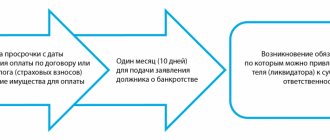Never before has photography been so easy and fun. Not only the owner of a camera, but even an ordinary smartphone can feel like a real photographer. But the threat of illegal use of photographs was also not so significant before. The Internet has become a platform where it is not customary to ask permission from content owners to use it.
What to do if you suddenly found your photo on a website or on someone else's blog? What is the threat to a violator who uses someone else’s photographs without permission? And how can you copyright your photos? Evgenia Galkina answered these questions to the FAN .
Photo from the personal archive of Evgenia Galkina /
Photographer's copyright for photographs
You can take photographs for fun or do it professionally. Regardless of the purpose of creating photographs, each frame taken is legally recognized as a work of art. This means that every photograph is the subject of copyright - an entire branch of modern law that considers the creation of works, their use and the liability of third parties who use other people's works illegally.
In our country, the rights of authors are secured by the Civil Code. According to its provisions, copyright in a photograph arises at the moment of its creation. The photo can be published by the author, that is, posted in open sources: on a website, in the media, or a personal blog. Or it may be stored somewhere in an archive, on a computer, or even remain only on the negative. But even if it does not become public, it is still protected by law: no one can use the photo without the consent of the author.
This requirement applies to absolutely all photographs: clear and not very clear, professional and amateur, shots depicting landscapes or selfies taken with a mobile phone camera. The law does not separate photographs depending on their artistic merit.
“The presence of a creative component in the image is not necessary,” clarifies lawyer Evgenia Galkina. “In modern jurisprudence, all photographs are considered to be created creatively.”
Federal News Agency /
Who owns the photos?
Each photograph has an author. He has the right to demand that his name be indicated on the image. Copyright begins at the moment the work is created and belongs only to the author—it cannot be sold or given away. There is also no need to register additionally: to prove the authorship of a photograph in court, it is usually enough to have the source documents.
The author also has property rights to the images - he can publish, modify, sell, and use them in advertising. Property rights are alienable: they can be bought, sold, received as a gift or given away for free.
When a photographer shoots a photo shoot to order, the rights are divided: the copyright remains with the photographer forever, and the customer receives property rights. Their volume is specified in the contract. The photographer may assign the rights to publish images without the right to make changes. Then the photo will belong to the customer, but he will not be able to insert it into the collage.
If there is a person in the photograph, you must also obtain written permission from him to use the image. If you take a photograph of an employee, this photograph cannot be placed on an advertising banner without his signature. This applies to photographs of all people, because otherwise the laws on personal data are violated. However, there are a few exceptions. Permission is not needed if:
- this is a public figure;
- filming takes place in crowded places;
- The model received payment for the photo shoot.
Photo copyright infringement
Since the creator of the photo is also its owner, it is prohibited to use the photo without his permission. You can’t just copy someone’s photo from a website on the Internet and post it on your blog or on the page of a periodical. You cannot scan a photo you like and post it online. Publication of someone else's work at your own discretion in any sources and its other use is illegal.
It is illegal to copy not only a photograph as a whole, but also part of it, even a small element. And according to the law on copyright in photographs, this rule applies throughout the life of the photographer and another 50 years after his death. And if the author discovers that his work has been used for their own purposes by third parties, he can bring them to justice - civil and even criminal.
“The author has the right to demand compensation from the violator,” comments lawyer Evgenia Galkina. — Its size can range from 10 thousand rubles to 5 million rubles. The amount of compensation is determined by the court, taking into account the nature of the violation and the losses suffered by the author.”
If the damage is significant, the offender may be subject to criminal liability. It is enshrined in Article 146 of the Criminal Code of the Russian Federation. Under this article, you can recover up to 200 thousand rubles from the defendant, and also bring him to:
• forced labor up to 480 hours; • correctional labor for up to 1 year; • arrest.
If the court finds that the photographs were illegally used for commercial purposes, transported, or resold, the punishment may be even more severe. The defendant may be subject to forced labor for up to two years, or may be imprisoned for two years.
Federal News Agency / Stepan Yatsko
What to do when you receive a claim for illegal use of a photo
Margarita Ledovskikh, media lawyer, expert in the field of information law, head of the “Law on the Network” project:
“First you need to understand whether the claim is justified or not, because the algorithm of actions depends on this. First of all, look at the situation on your site. If the case goes to court, what are the grounds for using the images?
If rights are violated and the plaintiff’s demands are adequate, then I recommend reaching an agreement. In my practice, the question usually gets stuck on finances. Using images without permission causes moral harm, for which they demand money. In judicial practice, it is usually estimated at 20–30 thousand rubles. If the site owner is asked for a similar amount, up to 50 thousand rubles, then it is better to negotiate. Because the court will bring additional waste of time and money on a lawyer, and in case of loss, also payment of legal costs for the other party.
After agreements, under no circumstances should you simply transfer money. First, sign an agreement to settle the dispute out of court. In it, indicate what amount and how you are transferring, note that the controversial photo has been deleted, and the parties have no claims against each other. Otherwise, the plaintiff can still sue, just put forward additional demands.
Sometimes site owners, having received a claim, simply delete photos and believe that now nothing can be proven. As a rule, this is not the case. Look at how the claim is drafted. If it is legally literate and contains references to laws, then, most likely, the plaintiff has prepared and has already recorded and notarized the fact of violation.
If the claim is not justified, it still cannot be ignored. You need to draw up a reasoned refusal, in which you explain your position and convince the person that he has no chance of winning in court when filing a claim.
It also happens that a person asks to delete photographs in which he is depicted, even if he gave written consent. We must understand that he has the right to withdraw consent. In this case, the photograph must be removed, because otherwise the person may later demand through the court not only to remove the image, but also to compensate for moral damage.”
What the law says about publishing other people's photos
Art. 152.1 of the Civil Code (Civil Code) of the Russian Federation establishes that any public use of images of individuals, including posting on social networks, must occur only with the consent of such persons, and after their death - with the consent of close relatives.
This article of the Civil Code of the Russian Federation includes::
- photos;
- video recordings;
- artistic portraits.
Without the consent of the owner, you cannot post photos not only on websites and public social networks - sending photos in personal correspondence is also considered distribution and is prohibited (clause 3 of the Plenum of the Supreme Court No. 46).
Search in social networks
An offender who posted someone else's photos anonymously or from someone else's account cannot escape justice. Kravchenko explained that forensic science is now developed and during investigations they cooperate with telecom operators that provide access to the network.
“The social network knows the IP address, and often the phone number of the user who made the publication is enough. Knowing the IP address, we can find the telecom operator who provided this address. And then the time of publication is compared with [information about] which subscriber used this IP address,” said Kravchenko.
If the images were published on Russian social networks, then the matter becomes much simpler. Lukhin explained that you can make a request and find out who registered under this phone number. And then you can request data from your mobile operator.
Publishing intimate images of others is always a traumatic situation for a person, most often for a girl. In general, a person should know who they are sharing naked pictures with and be sure that person will not forward them to third parties.
Where to get pictures for free on the Internet and how to use someone else’s photo without consent
Use the public domain. Look for royalty-free images: British Library and Old book illustrations, MoMA and J. Paul Getty art, NASA photography, vintage poster selections, historical photographs, and black-and-white images.
Select in search. A good resource for this is Compfight, which can be used to find images for commercial purposes. He searches for keywords among free images on Flickr and on the paid site Shutterstock. There is also a convenient search on Creative commons. You can set search criteria: for commercial purposes and with editing rights. The search is on Flickr, Google image, Pixabay and Open Clip Art Library.
Take advantage of free photo stocks . There are a lot of them. Let's give a few examples: Unsplash, Best stock photo, Pexels, RGB Stock and Russian-language Free Stock Images.
There are also thematic photo stocks. Thus, food photos can be downloaded from the Foodies feed and FreeFoodPhotos portals, nature - from Free Nature Stock, travel - from Travel Photos, city views - from Big foto, creative - from Gratisography, lifestyle - from the Carolina coffee shop stock, and patterns - from Pattern Library.
Briefly
Each photograph has an author who has the right to transfer property rights: sell, give, publish or edit images. In order not to violate the rights of others, you can ask permission from the author, use photographs from photo banks or those belonging to the public domain, and post images in accordance with the rules of free citation. You can use a person’s photograph only with his written consent, with the exception of three conditions: he is a public figure, a paid model, or photographed in a public place. Remember: publishing a photo without consent is a violation of an article of the Civil Code!
Lawyers against “revenge porn”: who leaks private photos and what will happen for it
When Norma was seventeen, she met nineteen-year-old Christopher Morcos at a Starbucks near her home. He studied business in college, and quiet Norma liked that he was sociable. He was her first boyfriend, they dated for two years. Like many young men, he asked her to send him indecent selfies. Like many girls, she sent. She made him promise that he would keep them to himself. He assured that he had locked them with a password and would never distribute them. Nevertheless, he once joked that he would do it. Norma, a university student who lives with her parents, did not laugh in response. She warned that if he did this, she would sue him.
In 2014, Norma broke up with Morcos. He bombarded her with messages, in particular, wrote that they needed to meet because his mother was terminally ill (this was not true). In other letters, he threatened to distribute intimate photographs of her. A few months later, Norma received a text message from a stranger saying that he had seen her page on PornHub, one of the most famous porn sites.
She called the manager of the store where she worked, warned that she would be late, and began a frantic search on the Internet. Norma eventually discovered eight photos she had sent to her boyfriend on a page that included her first and last name. “There was a text there, namely an offer to perform oral sex with me, my mobile phone number, city, street name. It said, “Find me on Facebook.” There was my breast size. And these photographs."
"Porn without consent"
Norma had Morcos prosecuted and charged with violating privacy under a law dubbed the "anti-revenge porn law." New Jersey was the first to adopt it in 2004. It makes it a crime to publish private intimate photographs or videos unless consent is obtained.
The term for such laws is “non-consensual porn.” Online harassment doesn't always involve a spurned boyfriend. Sometimes criminals break into secure cloud storage systems like iCloud or Gmail to steal photos of celebrities. In 2014, Jennifer Lawrence and other celebrities became victims of similar actions. In 2016, one of the hackers, Ryan Collins, received 18 months in prison. Ordinary people can also be victims. For example, Louis Miyangos tricked women into installing a program that searched their computers for indecent photographs and turned on webcams and microphones to film women undressing and having sex. He then threatened to make it all public if they didn't make pornographic videos for him. In 2011, he was sentenced to six years for hacking and eavesdropping.
- Cancel loans, taxes and marital debt: what people want from lawyers
March 19, 9:18 - Documentaries: how they influence public opinion and court decisions
October 2, 8:59
Norma's statement most likely would not have reached the court if it were not for Carrie Goldberg, who was sitting next to her confidante in court. Goldberg was then 39 and already specialized in sexual mystery. She has clients like Norma who want to remove private photos from the Internet before they spread widely and strangers start showing up at their home. There are other clients who are currently only being blackmailed by threatening to send indecent photographs to employers, parents or other relatives.
Goldberg herself was once stalked by a vengeful ex. Then she headed the legal department at the Vera Institute, a non-profit organization with a criminal profile. The ex threatened to send intimate photos of her to her colleagues. But when she went to the police, they told her it was not a crime. She was scared and ashamed. Fortunately, the ex never distributed the photographs; a restraining order was issued against him [prohibits some actions, for example, approaching the target of persecution, writing to him, etc. – Pravo.ru]. And Goldberg was inspired to found her own law firm. For many clients in their 20s or early teens, Goldberg is like a cool big sister who is always there to support. She greets them with girlish cheerfulness - “Hello!” - and then gets down to business.
Copyright and big sites against “revenge porn”
First of all, the photos had to be removed from the Internet. Previously, this most often required a claim of copyright infringement. After all, the one who took the photo automatically receives copyright to it. This means that the selfie is your property. If someone else took your photo, theoretically the photo belongs to them, but you can also claim your rights to it. Fighting “revenge porn” with copyright is like going after Al Capone for not paying taxes, but copyright is one of the few restrictions that are somehow recognized on the Internet.
Goldberg's colleague Erica Johnstone talks about her clients: a girl whose intimate photos were distributed online, and the mother who helped her delete them.
To remove the photos that went viral, they spent at least 500 hours from May to October sending out requests. It was like a full-time job. Moreover, not all sites agreed to remove the pictures.
Erica Johnstone, lawyer
In recent years, partly in response to requests from Goldberg and other activists, some large sites have begun banning "revenge porn" themselves. In some places, online forms have appeared that allow you to remove personal materials without resorting to copyright law. The search engines also agreed to stop indexing the names of victims, even if the materials can be found by URL. “We have always strived to ensure that search reflects the entire web,” Google said. “But the images associated with ‘revenge porn’ are very personal and emotionally traumatizing, and are only meant to humiliate the victim.” PornHub also said it will honor requests to remove private photos and videos posted without the consent of the person depicted.
At the same time, several scandalous sites dedicated specifically to “revenge porn” were closed, and their owners were brought to justice – not for distributing porn, but for theft of personal data, extortion and hacking on the Internet.
Special norms are met with criticism. If laws against "revenge porn" are too broad, they could affect teenagers who exchange sexually explicit images or images of naked people of public interest, such as prison inmates. In particular, in 2021, Rhode Island Governor Gina Raimondo vetoed a bill against “revenge porn” because it did not specify that the release of photographs must be done for the purpose of harassment to be considered a criminal offense. The initiators of the amendment objected that the text was drafted to provide for exceptions where there is a public interest. Moreover, if you leave the “purpose of persecution”, this will leave outside the scope of the law the owners of sites with illegal photographs, and those who simply make money from it.
Before the trial, in the trial and after
When Goldberg agreed to help Norma, they went to the police the next day. "Sometimes victims don't know how to describe their case in a way that will impress police officers," Goldberg said. She took a printout of the applicable state law and asked Norma to count all the messages from Morcos.
I always tell clients that it is important to show the police the numbers. “For example, a stalker called me 75 times in two hours, 14 of them threatening to drown my dog. In such and such a period of time, he posted my photos on three different websites, and now I am on thousands of different websites.”
Carrie Goldberg, lawyer
But even with this approach there was no success; the door was slammed in their face. The police recalled that Norma had already made a similar statement, but there was still not enough evidence.
I had to get the IP addresses of the devices from which the photos were posted through Internet providers. The trail led to Morcos' mother's house. This ultimately helped secure a guilty plea from Morcos for breach of privacy in exchange for dropping a second charge of cyberstalking.
Both of Norma's parents and two of her friends were present in court when the verdict was announced. Goldberg invited another client as a listener because she thought it might encourage her.
Towards the end of the proceedings, Morcos apologized to the court and to Norma, whom he referred to as "she". “I've gone too far,” he said. “I don’t think I could handle it all.” Then Norma stood up and delivered a 900-word speech, having practiced in Goldberg's office.
“I was worried whether I would be able to find a good job if these photos went viral,” Norma read. “I was worried about my safety - I was afraid that the rapist would be able to figure me out after seeing my photographs and personal information.” These fears are not unfounded. In 2009, one boyfriend wrote an ad on behalf of his ex, saying she wanted “a really aggressive man who doesn’t care about women.” As a result, she was raped at knifepoint - the rapist came as part of an advertisement. Goldberg had a client whose stalker repeatedly created fake advertisements claiming she wanted sex. The client worked in a pharmacy, and men were constantly visiting there, attracted by the offer.
“I can’t get back the secret of my personal life,” Norma concluded. “I don’t know how many people saw these photographs, how many saved them, and every day I think that other people saw me in the most intimate way.”
As the father of a daughter, I could say a lot. This behavior goes so far beyond the bounds... Especially for intelligent people. There is a lack of awareness, a lack of self-control.
Michael Ravin, judge
Ravin sentenced Morcos to four years probation, then corrected himself: “No, let it be five.” This was the “ceiling” according to the law. Morcos was also given 100 hours of community service, a mental stability assessment and a ban on contacting Norma and her family. If he fails to comply, he could be sent to prison, Judge Ravin explained.
Norma and her family later said they would not have minded if Morcos had been sent straight to prison. But they were grateful to Goldberg and the prosecutor. “Norma won't cry at home, she was treated with respect today,” Goldberg said. However, she highlighted Ravin's words that the facts had hurt him as the father of a daughter. “I would like it not to always be ‘like the father of a daughter’ or ‘like the husband of a wife,’” the lawyer said. – I would like to hear “this violation of dignity worries me, as a person with a soul and conscience.”
Goldberg tries to tell his clients that they shouldn't be ashamed. There is an opinion that those who value their privacy will not send their naked photos to anyone. In response, Goldberg cites cases where filming was carried out without the consent of the subject. “What, you can’t change clothes or take a shower?” she asks. In addition, there are cases where a face is “photoshopped” onto someone else’s naked body. “That's why you have to look at distribution first,” Goldberg insists.
But even if you took a photo of yourself naked and sent it to someone, this is not necessarily reckless behavior, but rather a time-tested tradition, the lawyer says. American soldiers, going to war, took with them photographs of girls and wives in pin-up poses. Often this is part of personal correspondence. “Sure, it can be used as a weapon, but really, anything can be used as a weapon,” Goldberg concludes (1).
What's next
As of 2021, legislators in 46 states have already banned “non-consensual” pornography. But activists called for a federal law. The project passed the House of Representatives in March and is awaiting approval in the Senate, The Verge writes in mid-April 2021. If it comes into force, it will provide for up to two years in prison for each person prosecuted. Far-reaching consequences could await anyone whose websites contain photographs uploaded by users, the publication warns.
Unlike many other similar acts, this one does not specify the motive of the perpetrator - for example, whether he intended to harm the victim. All that matters is that they knew (or recklessly ignored the possibility): the photo was distributed without consent and the person had a reasonable expectation of maintaining personal privacy. This will make prosecution much easier, but raises concerns about possible threats to freedom of expression.
Despite the well-established term “revenge porn,” many such antics are not related to revenge at all.
According to one estimate, only 20% of cases have a motive to harm. In other cases, fame, social status, the desire to make money, entertainment, voyeurism, or no specific reason may be involved.
Mary Ann Franks, co-founder of Cyber Civil Rights
It is unknown whether the Senate will pass the law. Many are against it - in particular, they point out that a federal law is not needed if there are local ones. Others say that existing legal structures for protection are sufficient without this. “It's been a similar story with many laws that affect women,” says law professor Jessica Magaldi. “It takes time for people to understand that this is important.” (2)
How about in Russia?
In Russia, such actions are often qualified under Art. 137 of the Criminal Code (“Violation of privacy”). Sanction Part 1 provides, among other things:
- fine up to 200,000 rubles. or in the amount of the convicted person’s salary/income for a period of up to 18 months;
- compulsory work up to 360 hours or correctional labor up to a year;
- arrest up to four months;
- imprisonment for up to two years.
“Depending on the content of the information, additional qualifications under Art. 242 of the Criminal Code [Illegal production and circulation of pornographic materials],” says lawyer Alexander Inoyadov. Distribution of pornography via the Internet (clause “b”, part 3) is punishable by imprisonment from two to six years.
For example, in case No. 22-1938/2017, the Bezhitsky District Court sentenced the defendant under Part 1 of Art. 137 of the Criminal Code to 1 year of correctional labor with the withholding of 20% of earnings to the state, under paragraph “b” of Part 3 of Art. 242 of the Criminal Code to 3 years in prison. As the court found, the man illegally distributed information about the woman’s private life and her pornographic photographs on the Internet. The Bryansk Regional Court left the decision unchanged.
Another case was found by the lawyer of the European Legal Service, Sergei Mrachkovskikh. It was examined in 2015 by the magistrate of the judicial district of the city of Belokurikha, Altai Territory, E. Trifonova. The Tarankovs once quarreled and wanted to get a divorce, but the wife moved out. The husband briefly became involved with Irina Tumanova*, who sent him a frivolous photo on the beach without the top of her swimsuit.
Later, Tarankov made peace with his wife, and she found in her husband’s mail, to which she had access, an image of a half-naked Tumanova. Tarankova decided, as she later told her husband, “to teach her mistress a lesson and make it clear that she cannot have any relationship with her husband.” To do this, she uploaded an intimate photo of Tumanova to Vkontakte with the caption that she provides intimate services for money.
Tumanova insisted that her wife had violated the secret of her intimate life. As the victim said in her testimony, she did not give Tarankov consent to show this photograph to anyone, they talked about it. She complained that her reputation had suffered, she had gotten a bad rap, and had received calls from men who needed “services.”
Moreover, according to Tumanova, it was Tarankov who asked her to send intimate photos. The man himself did not confirm this in court - on the contrary, he said that Tumanova herself sent him her photograph. Upon receiving it, the husband “was puzzled by this fact.” “She likes to anger married women - that’s how she had fun,” Tarankov said in court. “A person who cares about his reputation will not behave like that.”
Nevertheless, the magistrate believed Tumanova. Tarankov, she decided, was simply helping his wife avoid criminal liability. As a result, Trifonova sentenced Tarankova* to 10,000 rubles. fine (however, she was immediately released from punishment due to the amnesty).
(1) – a shortened free translation of the article The attorney fighting revenge porn.
(2) – a shortened free translation of the article A federal 'revenge porn' ban could transform online harassment laws.
* – names and surnames have been changed by the editors.
- Evgenia Efimenko









